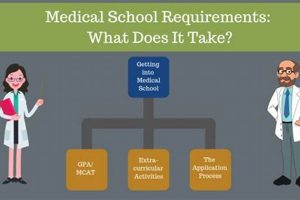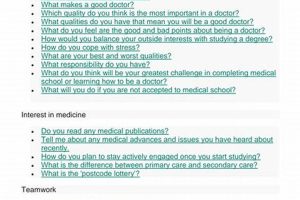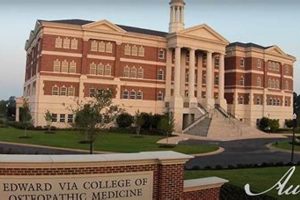
Trade schools for the medical field provide specialized training programs that prepare students for various healthcare professions in a shorter timeframe compared to traditional college or university programs. These programs typically focus on developing practical skills and knowledge necessary for entry-level positions in the medical industry. Examples of trade schools for the medical field include institutions that offer training in medical assisting, phlebotomy, dental assisting, and pharmacy technician programs, among others.
Pursuing a trade school education in the medical field offers several advantages. Firstly, it allows individuals to gain hands-on experience and develop practical skills through internships, clinical rotations, or laboratory work, which are essential for success in the healthcare industry. Secondly, trade schools often provide flexible schedules and part-time options, making it easier for students to balance their education with other commitments such as work or family responsibilities. Thirdly, the cost of attending trade school is generally lower than that of traditional college or university programs, making it a more affordable option for many students.
The history of trade schools for the medical field can be traced back to the late 19th century when the demand for skilled healthcare professionals grew rapidly. These schools were initially established to provide training for nurses and midwives, but over time, they expanded their offerings to include other medical specialties. Today, trade schools play a vital role in the healthcare system by providing a skilled workforce that supports doctors, nurses, and other healthcare practitioners.
1. Practical Skills: Trade schools emphasize hands-on training and practical skills development through internships, clinical rotations, or laboratory work.
In the medical field, practical skills are essential for success. Healthcare professionals need to be able to perform a variety of tasks safely and efficiently, and trade schools provide the opportunity to develop these skills through hands-on training. Internships, clinical rotations, and laboratory work allow students to gain real-world experience and apply their knowledge in a practical setting. This type of training is invaluable for preparing students for the workforce and ensuring that they are ready to hit the ground running in their new careers.
For example, a student in a medical assisting program may complete an internship at a local doctor’s office or clinic. During this internship, they will have the opportunity to assist with patient care, take vital signs, and perform other administrative tasks. This hands-on experience will give them the confidence and skills they need to succeed in their future career.
Practical skills are also essential for career advancement in the medical field. Many employers prefer to hire candidates with experience in a specific area, and trade schools can provide the opportunity to gain this experience. For example, a medical assistant with experience in phlebotomy may be more likely to be promoted to a lead position or a nurse with experience in IV therapy may be more likely to be promoted to a charge nurse position.
Overall, the emphasis on practical skills in trade schools for the medical field is a key factor in the success of their graduates. This type of training provides students with the knowledge and experience they need to be successful in their careers and to advance in the medical field.
2. Career-Focused: Programs are designed to prepare students for specific careers in the medical field, with a focus on job placement and career advancement.
Trade schools for the medical field are designed to prepare students for specific careers in the healthcare industry. This career-focused approach is evident in the curriculum, which is tailored to the specific skills and knowledge required for entry-level positions in various medical fields. For example, a medical assisting program will cover topics such as medical terminology, anatomy and physiology, and administrative procedures. A phlebotomy program will focus on blood collection techniques and safety protocols. And a pharmacy technician program will cover the basics of pharmacology and medication dispensing.
- Job Placement Assistance: Many trade schools for the medical field have dedicated career services departments that assist students with job placement. These departments provide resume writing, interview preparation, and job search assistance. Some schools also have relationships with local healthcare employers and may be able to help students secure internships or job shadowing opportunities.
- Career Advancement Opportunities: Trade schools also provide a pathway for career advancement. Many graduates go on to pursue further education or specialized training in their field. For example, a medical assistant may decide to become a registered nurse or a pharmacy technician may decide to become a pharmacist. Trade schools can provide the foundation for a successful career in the medical field and offer opportunities for career growth and advancement.
The career-focused nature of trade schools for the medical field is one of the key reasons for their success. Graduates of these programs are highly sought-after by employers, and they have a high rate of job placement and career advancement. If you are interested in a career in the medical field, a trade school may be a great option for you.
3. Flexible Learning: Trade schools often offer flexible schedules and part-time options, making it easier for students to balance their education with other commitments.
In the context of trade schools for the medical field, flexible learning is of paramount importance. The medical field is known for its demanding schedules and long hours, which can make it difficult for students to balance their education with other commitments such as work or family responsibilities. Trade schools recognize this challenge and offer flexible learning options to accommodate the needs of their students.
- Evening and Weekend Classes: Many trade schools offer evening and weekend classes, which allow students to attend school while still working full-time. This is especially beneficial for students who have families or other commitments that prevent them from attending school during the day.
- Part-Time Programs: Trade schools also offer part-time programs, which allow students to take fewer classes each semester. This can be helpful for students who need to work part-time or who have other commitments that require their time.
- Online Learning: Some trade schools offer online learning options, which allow students to complete their coursework at their own pace and on their own schedule. This is ideal for students who live in rural areas or who have difficulty attending traditional classes.
- Hybrid Programs: Hybrid programs combine online learning with traditional classroom instruction. This can be a good option for students who want the flexibility of online learning but also want the benefits of face-to-face interaction with their instructors and classmates.
Flexible learning options are essential for trade schools in the medical field. They allow students to pursue their education while still meeting their other commitments. This makes it possible for more people to enter the medical field and fill the growing demand for healthcare professionals.
4. Affordable Education: The cost of attending trade school is generally lower than that of traditional college or university programs.
The affordability of trade schools is a major advantage for students pursuing a career in the medical field. The cost of attending trade school is typically lower than that of traditional college or university programs, making it a more accessible option for many students. This is especially important in the medical field, where the cost of education can be a significant barrier to entry.
- Reduced Tuition Costs: Trade schools often have lower tuition costs than traditional colleges and universities. This is because trade schools typically focus on providing practical skills training, which requires less expensive equipment and facilities than academic programs.
- Shorter Programs: Trade school programs are typically shorter than traditional college or university programs. This means that students can complete their education and enter the workforce more quickly, which can save them money on tuition and living expenses.
- Scholarships and Financial Aid: Trade schools often offer scholarships and financial aid to help students pay for their education. This can make trade school even more affordable for students who qualify.
The affordability of trade schools makes them a great option for students who want to pursue a career in the medical field. With lower tuition costs, shorter programs, and access to scholarships and financial aid, trade schools can help students save money on their education and enter the workforce more quickly.
5. High Demand: There is a growing demand for skilled healthcare professionals, making graduates of trade schools highly sought after in the job market.
The high demand for skilled healthcare professionals is a major factor in the success of trade schools for the medical field. The aging population and the increasing prevalence of chronic diseases are driving the demand for healthcare services, which in turn is creating a shortage of qualified healthcare professionals. This shortage is expected to continue in the years to come, making graduates of trade schools highly sought after in the job market.
There are several reasons why trade schools are able to meet the demand for skilled healthcare professionals. First, trade schools focus on providing practical skills training, which is essential for success in the healthcare field. Second, trade school programs are typically shorter than traditional college or university programs, which means that students can enter the workforce more quickly. Third, trade schools often have relationships with local healthcare employers, which can help students secure internships or job placement after graduation.
The high demand for skilled healthcare professionals is a testament to the value of trade schools for the medical field. Graduates of these programs are in high demand and have excellent job prospects. If you are interested in a career in the medical field, a trade school may be a great option for you.
6. Job Security: The medical field is known for its stability and job security, providing graduates with peace of mind about their career prospects.
The medical field is known for its stability and job security, making it an attractive career choice for many people. This stability is due to several factors, including the aging population, the increasing prevalence of chronic diseases, and the growing demand for healthcare services. As a result, there is a shortage of qualified healthcare professionals, which is expected to continue in the years to come.
Trade schools for the medical field play an important role in meeting the demand for skilled healthcare professionals. These schools provide students with the practical skills and knowledge they need to be successful in the healthcare field. Graduates of trade schools are in high demand and have excellent job prospects. They can work in a variety of settings, including hospitals, clinics, and long-term care facilities.
The job security that comes with a career in the medical field is a major benefit for graduates of trade schools. This security provides peace of mind and allows them to focus on their careers and families. It also makes the medical field an attractive option for people who are looking for a stable and rewarding career.
7. Career Advancement: Trade schools provide a pathway for career advancement, with many graduates going on to pursue further education or specialized training in their field.
In the context of trade schools for the medical field, career advancement opportunities are abundant. Graduates of these programs can pursue further education or specialized training to enhance their skills and knowledge, thereby qualifying for more advanced roles and responsibilities.
- Continuing Education: Many trade school graduates choose to pursue continuing education courses to stay up-to-date on the latest advancements in their field. These courses can be offered by community colleges, universities, or professional organizations.
- Specialized Training: Graduates may also opt for specialized training programs to acquire additional skills and certifications. For example, a medical assistant may choose to become a certified phlebotomist or a pharmacy technician may choose to become a certified medication aide.
- Degree Programs: Some graduates may decide to pursue a degree program to advance their careers. For instance, a medical assistant with an associate degree may choose to pursue a bachelor’s degree in health science or nursing.
- Management Positions: With experience and additional education, trade school graduates can qualify for management positions in their field. For example, a medical assistant with a bachelor’s degree and several years of experience may become a medical office manager or a pharmacy technician with a master’s degree may become a pharmacy manager.
The career advancement opportunities available to graduates of trade schools for the medical field are a testament to the value of these programs. By providing a strong foundation and a pathway for continued learning, trade schools prepare their graduates for success in the ever-changing healthcare industry.
FAQs
Aspiring healthcare professionals considering trade schools may have various questions. Here are answers to common queries to provide clarity and guidance:
Question 1: What are the benefits of attending a trade school for the medical field?
Trade schools offer focused training, practical skills development, flexible schedules, and career-oriented programs. These benefits cater to individuals seeking a quicker entry into the healthcare workforce and career advancement.
Question 2: Are trade schools accredited?
Accreditation is crucial for educational institutions. Seek trade schools accredited by reputable organizations like the Accrediting Bureau of Health Education Schools (ABHES) or the Commission on Accreditation of Allied Health Education Programs (CAAHEP). Accreditation ensures quality education and industry recognition.
Question 3: What are the job prospects for graduates of trade schools for the medical field?
Graduates are in high demand due to the growing healthcare industry and the shortage of skilled professionals. Employment opportunities exist in various healthcare settings, including hospitals, clinics, and long-term care facilities.
Question 4: Can I pursue further education after graduating from a trade school?
Yes, trade schools provide a foundation for continuing education. Graduates can pursue advanced training, certifications, or degree programs to enhance their skills and career prospects.
Question 5: Are trade schools more affordable than traditional colleges?
Generally, trade schools offer more affordable education compared to traditional colleges and universities. They focus on practical training, which requires less expensive facilities and resources.
Question 6: What is the difference between a trade school and a community college?
Trade schools prioritize hands-on training and career preparation, while community colleges offer a broader range of academic programs, including associate degrees and general education courses. Both options have their merits, depending on individual goals.
In conclusion, trade schools for the medical field provide a valuable pathway for those seeking a rewarding career in healthcare. Their practical focus, flexible schedules, and accreditation ensure quality education and job readiness.
For further exploration, continue to the next section of this article for additional insights into trade schools for the medical field.
Tips for Success in Trade Schools for the Medical Field
Pursuing a trade school education in the medical field requires dedication and a strategic approach. Here are some tips to maximize your success:
Tip 1: Choose an Accredited School: Accreditation ensures that the school meets quality standards and is recognized by employers. Look for schools accredited by reputable organizations such as the Accrediting Bureau of Health Education Schools (ABHES) or the Commission on Accreditation of Allied Health Education Programs (CAAHEP).
Tip 2: Focus on Hands-On Training: Take advantage of the practical training opportunities offered by trade schools. Engage actively in clinical rotations, internships, and lab work to develop essential skills and gain real-world experience.
Tip 3: Build a Strong Network: Attend industry events, connect with healthcare professionals on LinkedIn, and join professional organizations. Networking can provide valuable insights, job opportunities, and career guidance.
Tip 4: Stay Updated with Advancements: The medical field is constantly evolving. Continuously update your knowledge and skills by attending workshops, reading industry publications, and pursuing continuing education courses.
Tip 5: Explore Career Options: Trade schools offer training in various medical fields. Research different career paths, attend career fairs, and talk to professionals to identify the best fit for your interests and goals.
Tip 6: Utilize Student Resources: Most trade schools provide support services such as tutoring, academic advising, and career counseling. Utilize these resources to enhance your learning and career preparation.
Tip 7: Practice Professionalism: Adhere to the ethical standards and dress code of the healthcare field. Punctuality, respect, and a positive attitude will contribute to your success.
Summary: By following these tips, you can increase your chances of success in trade schools for the medical field. Remember to prioritize hands-on training, build your network, stay updated, explore career options, utilize student resources, and maintain professionalism throughout your educational journey.
For more in-depth information and guidance, continue reading the concluding section of this article.
Conclusion
In exploring trade schools for the medical field, we have gained insights into their unique advantages, career opportunities, and strategies for success. These institutions provide specialized training, practical skills development, and flexible learning options, making them an accessible pathway to a rewarding healthcare career.
The high demand for skilled healthcare professionals ensures that graduates of trade schools are highly sought after in the job market. With a focus on career-oriented programs and practical experience, trade schools empower individuals to enter the workforce quickly and effectively. Moreover, the affordability of trade schools makes healthcare education more accessible, opening doors for diverse populations to pursue their aspirations in the medical field.
As the healthcare industry continues to evolve, trade schools remain at the forefront of providing relevant training and skills development. By embracing technological advancements and adapting to changing healthcare needs, trade schools ensure that their graduates are equipped with the knowledge and competencies to succeed in the evolving healthcare landscape.
In conclusion, trade schools for the medical field play a vital role in addressing the growing demand for skilled healthcare professionals. They offer a valuable and accessible path to a rewarding career, empowering individuals to make a meaningful contribution to the healthcare system and the well-being of communities.






